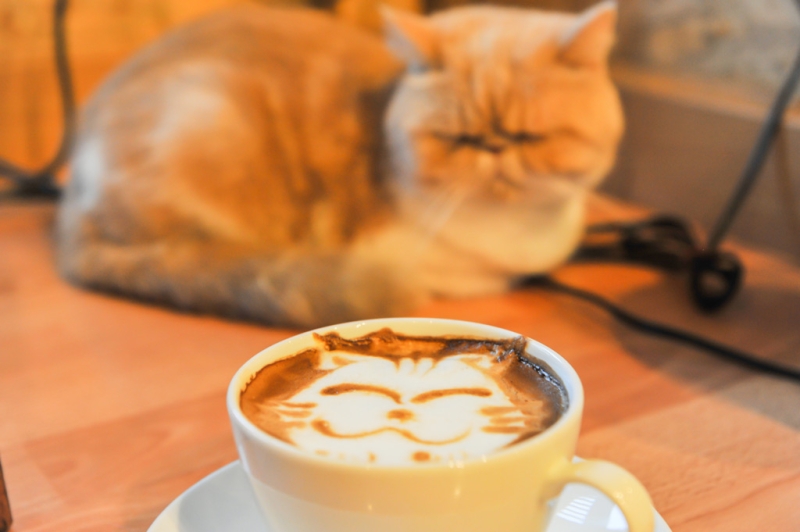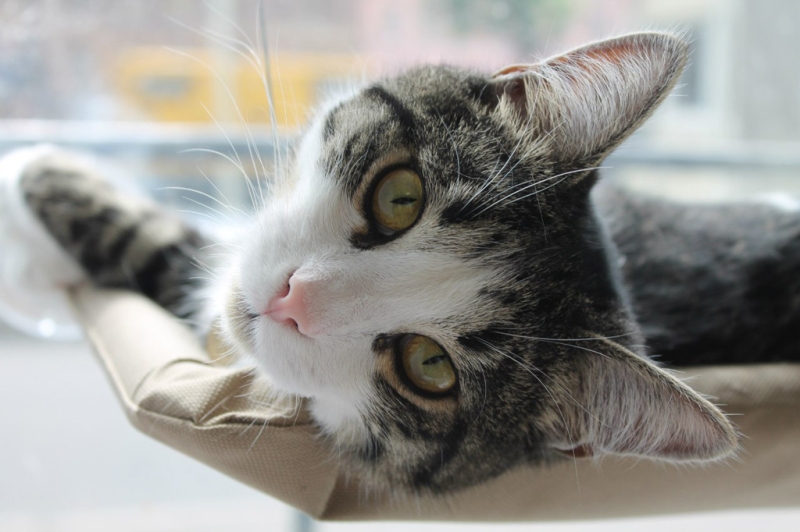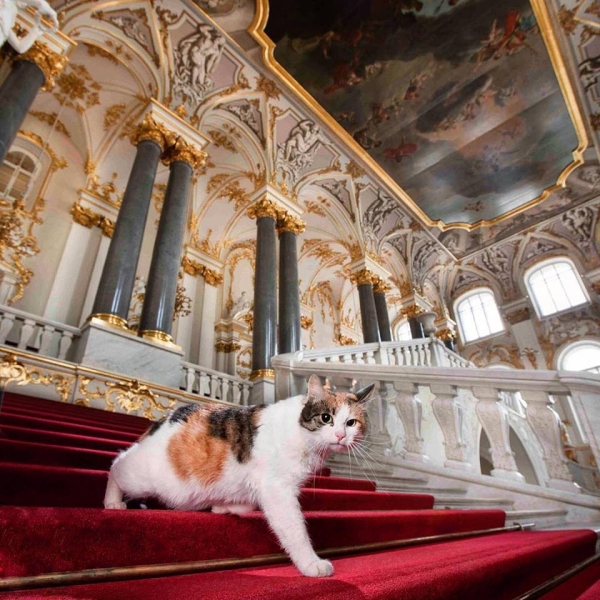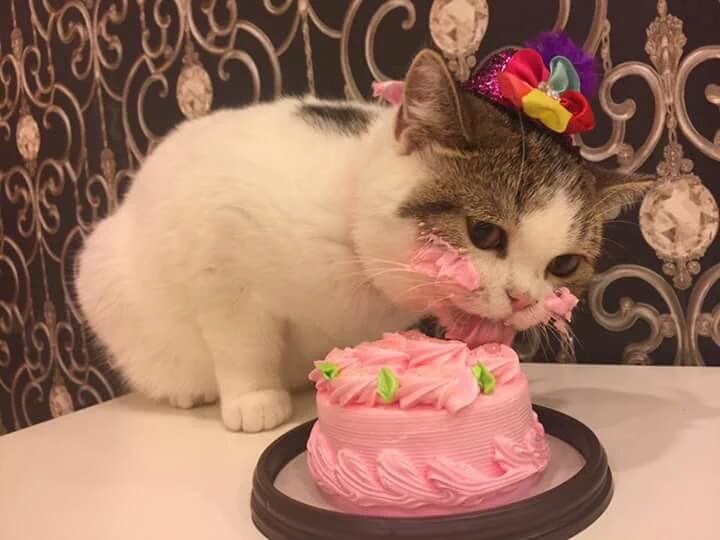
A cat cafe has opened in the center of St. Petersburg – an establishment with cats. Here as usual: a bar counter, tables and chairs, tea with cookies, pleasant music – all this plus cats. There are 13 individuals for every taste and disposition – to hug, stroke, play and purr in unison.
The quantitative and qualitative composition of the mustachioed “workers” of the establishment is changing: any kitty you like can be taken home if you wish. Soulmate (website),
is the name of this place on the embankment of the Fontanka River in the center of St. Petersburg, it operates as an anti-cafe. The visitor pays not for food and drinks, but for the time spent here: having a friendly conversation, working, playing board games or playing a console, reading a book or – why not – communicating with cats. As a free bonus, they will offer coffee, tea, cookies and sweets. However, for those who believe in the miraculous power of seals on humans – they are known to relieve stress, give joy, help to take a break from everything and get inspired – no additional bonuses are needed.

Photo: vk.com/soulmatespb
Soulmate is not the only such place in St. Petersburg. On Yakubovicha Street, next to St. Isaac’s Cathedral, another cat address of the city is marked – “Republic of Cats”. This is both a cafe and an exhibition space (permanent exhibition and temporary thematic exhibitions),
and a souvenir shop and permanent residence of 20 tailed “republicans”.

Photo: facebook.com/state.hermitage
The Hermitage cats have become almost as much a brand of St. Petersburg as the Hermitage itself. It is believed that the history of the Hermitage cats begins with the cat Vasily, brought by Peter I from Holland, who was placed in the wooden Winter Palace to fight rodents. Peter’s daughter, Empress Elizabeth, for the same purpose, ordered cats from Kazan, which, according to rumors, were famous for their special abilities in catching mice and rats. And Catherine II, who herself, however, preferred dogs, granted the Hermitage sailors the status of “guards of art galleries.” After the blockade, cats were brought to Leningrad, they say, from all over the country by train. Some of them went to serve in the Hermitage to fight the rats that infested the museum during the war. In the 1960s, they decided to give up cat services, but it didn’t work out. No modern means of protection against rodents could compare in effectiveness with simple murkas. The cats were returned to the Hermitage and since then they have been assigned the status of museum workers: each animal has a passport, a veterinary card and a uniform – a yellow neck bow. Cats can move freely around the Hermitage, but they are not allowed to enter the museum halls. Network of basements (almost two dozen kilometers),
where cats live and hunt is called a “big cat basement.” This basement is opened to the public on “Hermitage Cat Day”, which is held annually in April-May. On this day, thematic exhibitions, games, quizzes and competitions for children and adults are organized, paintings by famous masters with images of cats stored in the Hermitage and works by contemporary artists are exhibited. In addition, photo exhibitions and city performances are dedicated to the Hermitage cats, musicals are staged and books are written about them. However, there are relatively few lucky cats. The museum administration has set a limit of 50 cats. The museum gives away the “surplus” to good hands during specially organized events. The new owner receives a certificate “Owner of the Hermitage Cat”, which gives the opportunity for lifelong free access to exhibition halls.

Photo: vk.com/catsmuseum
If in St. Petersburg there is a museum with cats, then in Vsevolozhsk, Leningrad region there is a Cat Museum. This museum, in the almost homely atmosphere of a country mansion, tells how a man and a cat lived side by side for thousands of years. The museum’s collection includes everything related to cats: costumes, souvenirs, household items, posters, posters, figurines, paintings, toys, figurines. Visiting the museum is by appointment.
You may be interested in:
Above the roof: the best observation decks in St. Petersburg
Gatchina, which you have not seen yet
Museum-reserve “Borodino Field”

